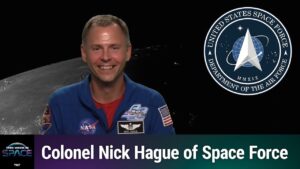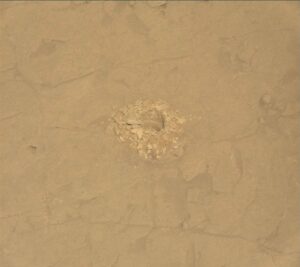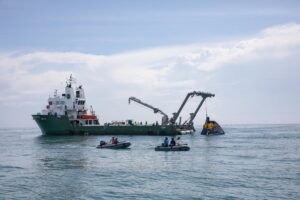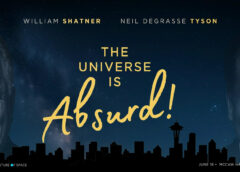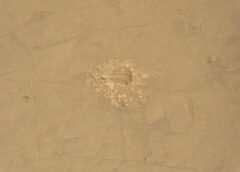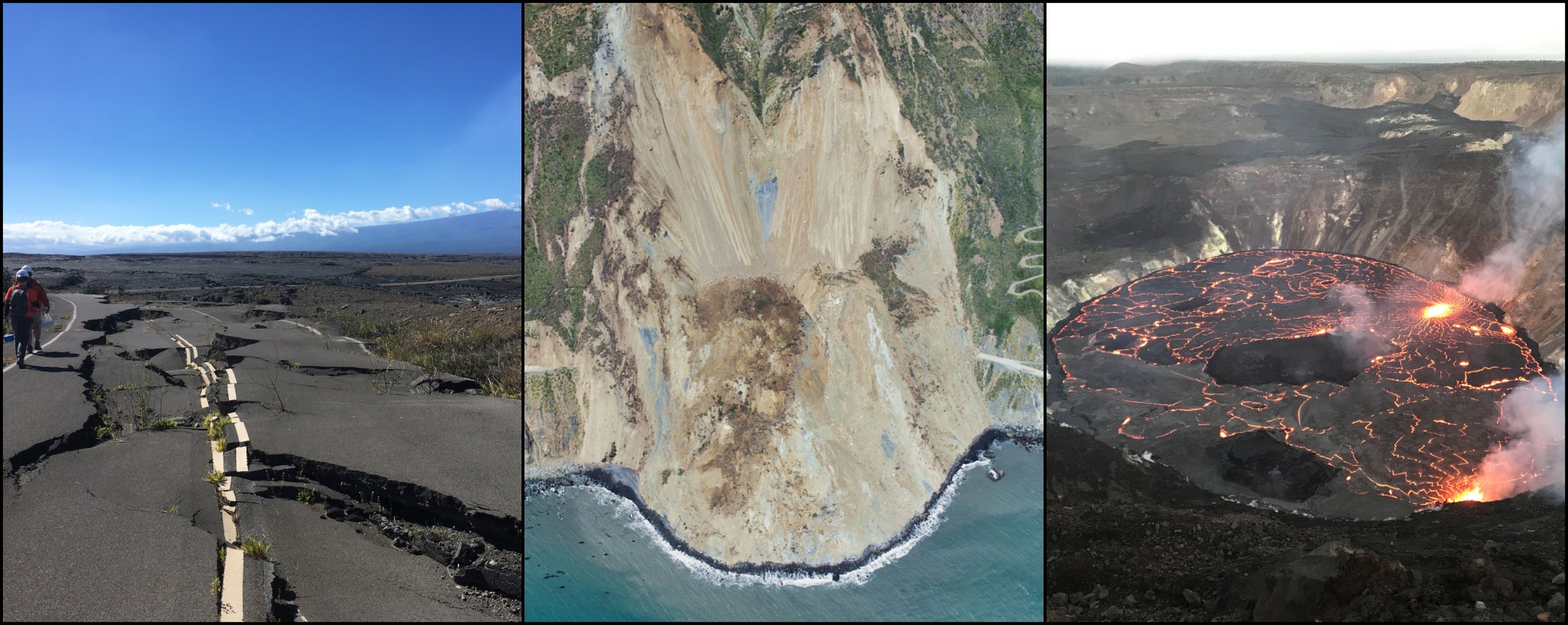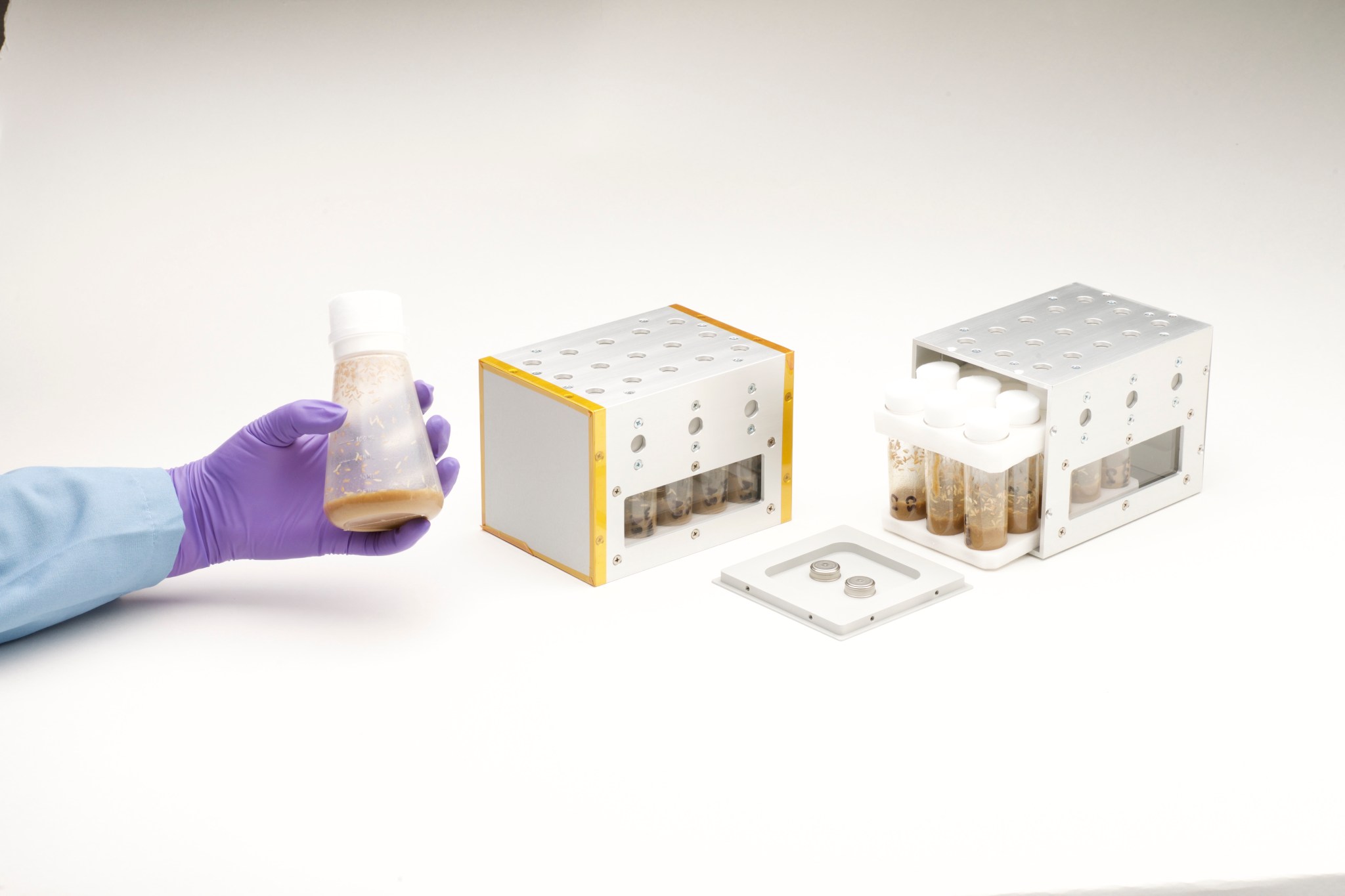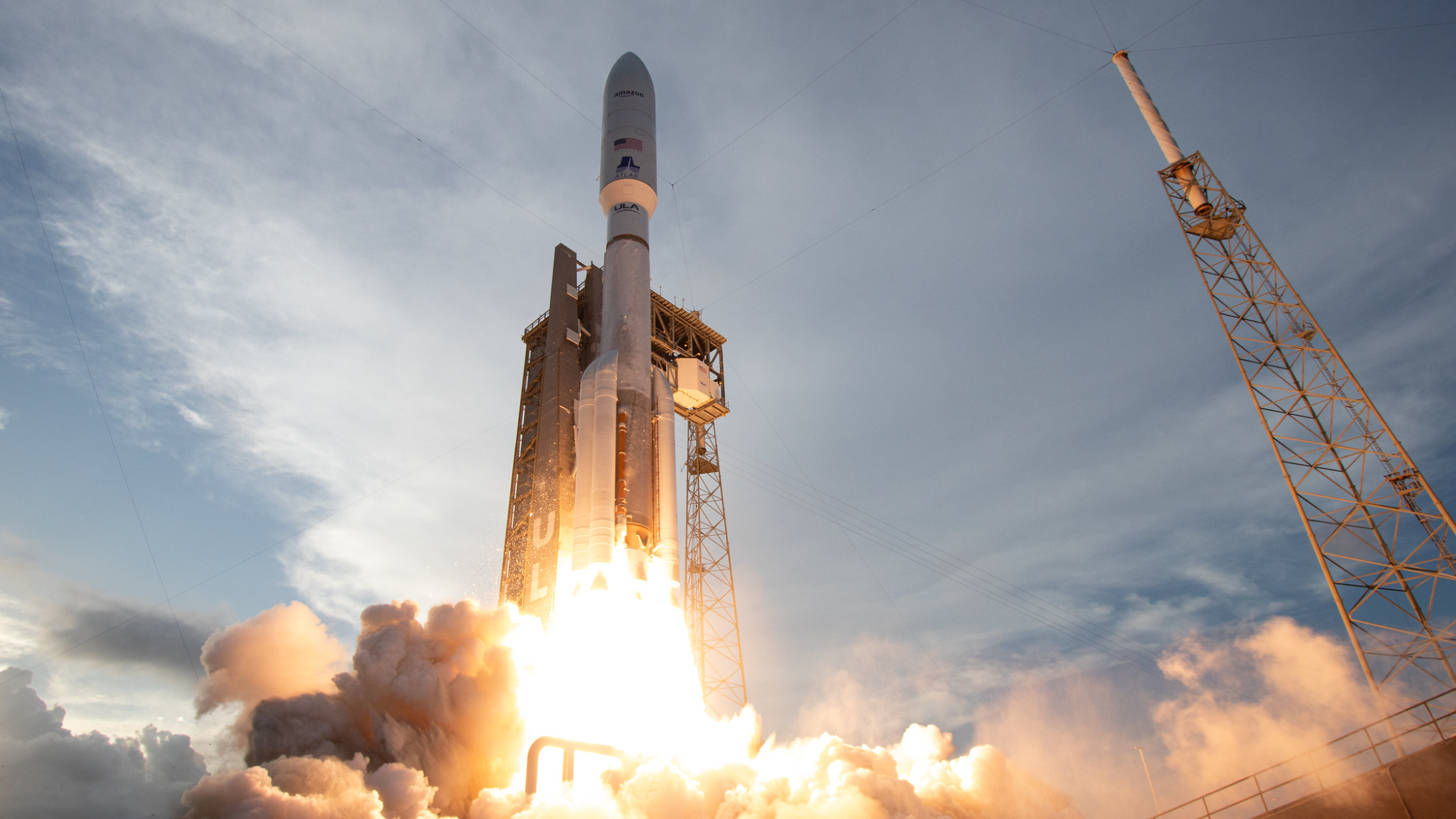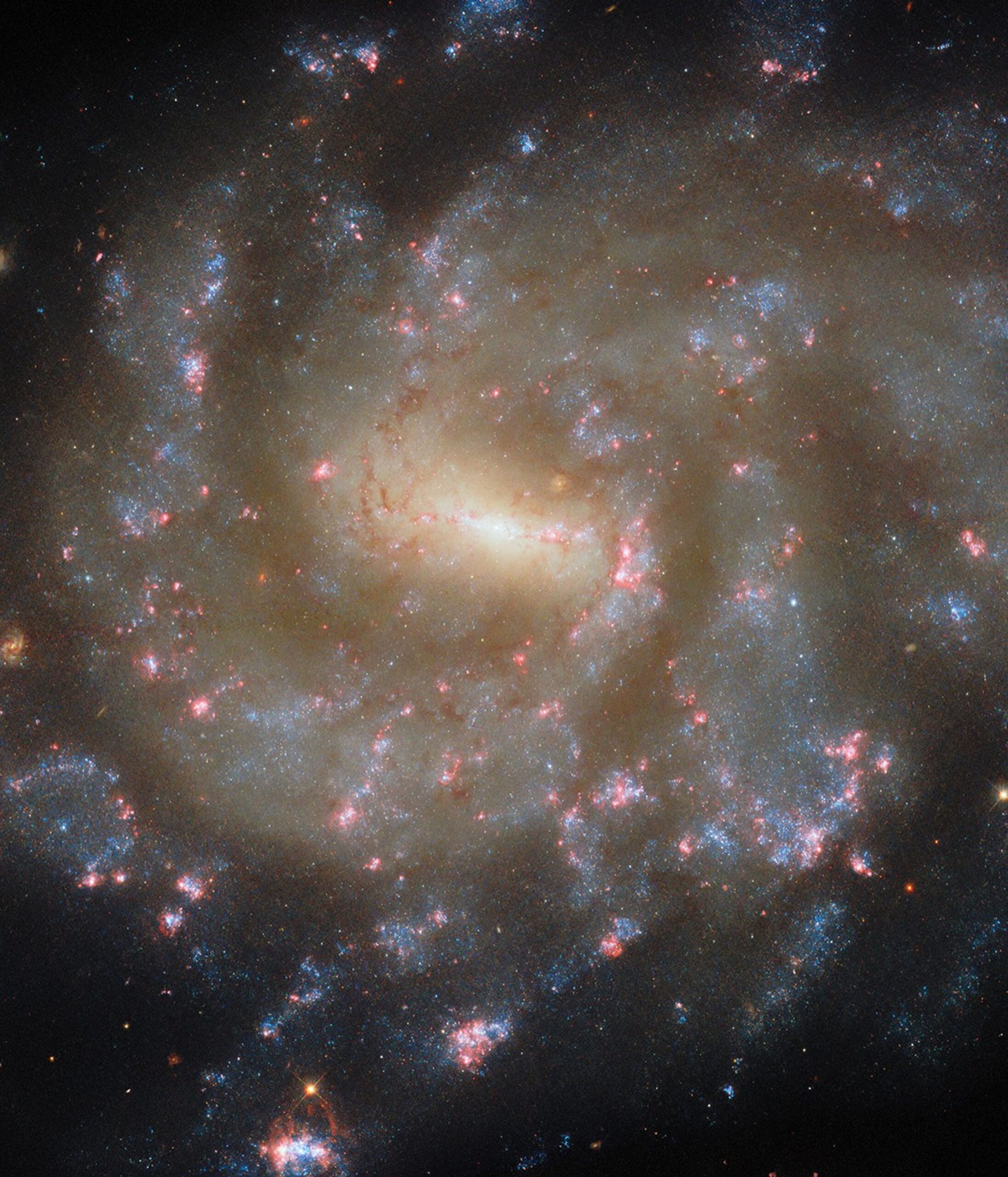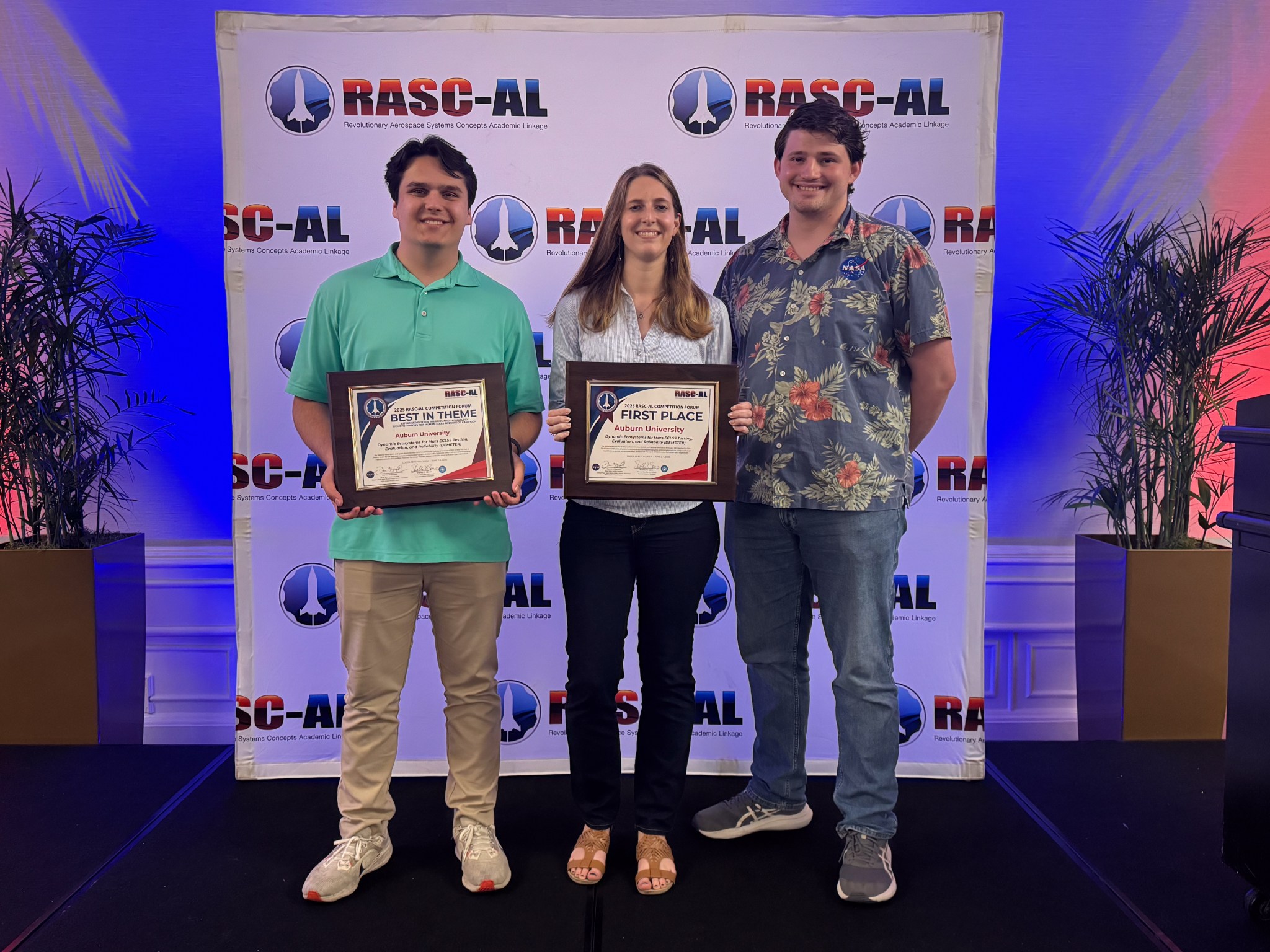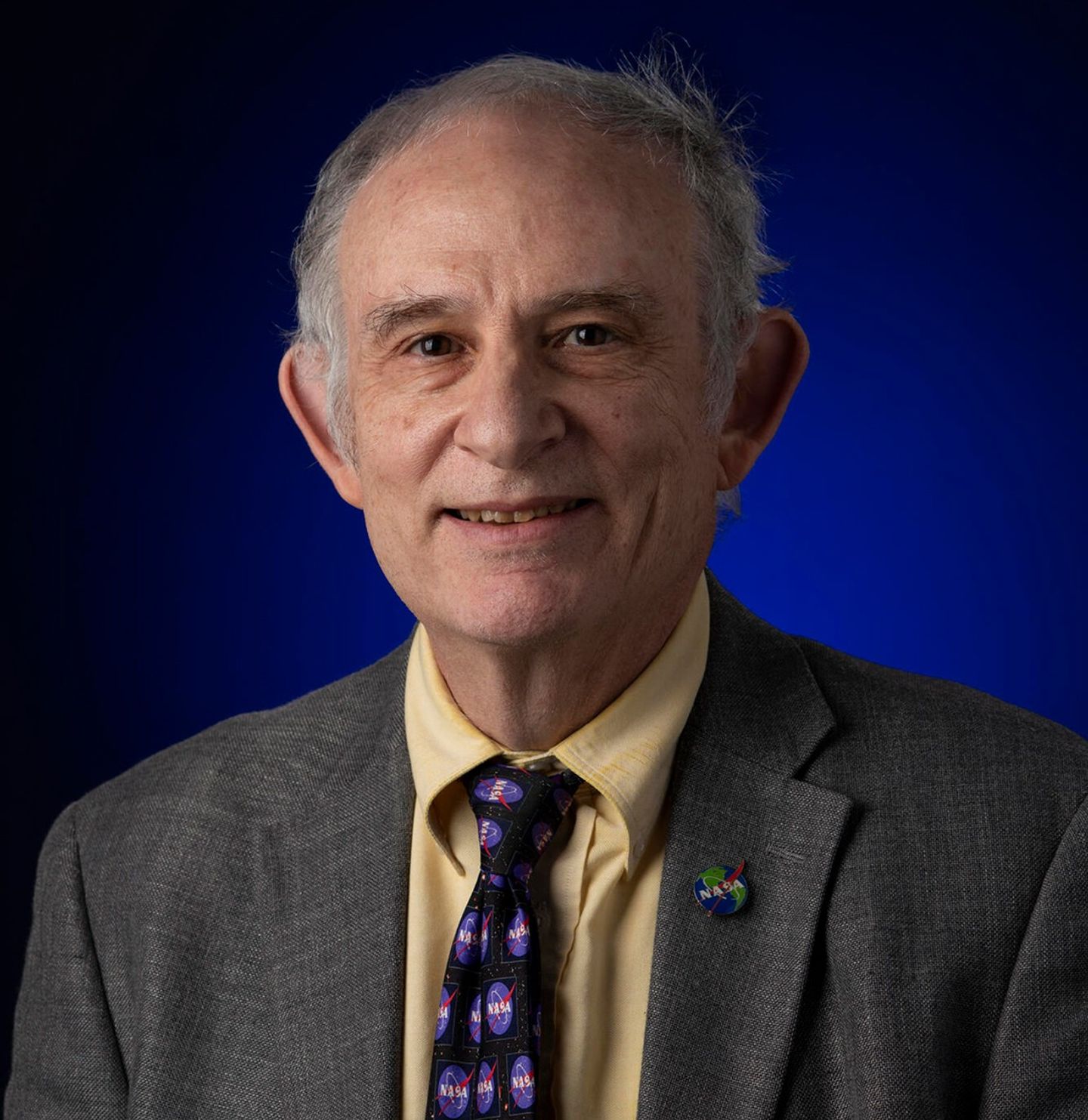Arsia Mons, an ancient Martian volcano, was captured before dawn on May 2, 2025, by NASA’s 2001 Mars Odyssey orbiter while the spacecraft was studying the Red Planet’s atmosphere, which appears here as a greenish haze. NASA/JPL-Caltech/ASU The 2001 Odyssey spacecraft captured a first-of-its-kind look at Arsia Mons, which dwarfs Earth’s tallest volcanoes. A new panorama from NASA’s 2001 Mars Odyssey orbiter shows one of the Red Planet’s biggest volcanoes, Arsia Mons, poking through a canopy of clouds just before dawn. Arsia Mons and two other volcanoes form what is…
Read MoreNASA’s Ready-to-Use Dataset Details Land Motion Across North America
A new online portal by NASA and the Alaska Satellite Facility maps satellite radar meas-urements across North America, enabling users to track land movement since 2016 caused by earthquakes, landslides, volcanoes, and other phenomena. USGS An online tool maps measurements and enables non-experts to understand earthquakes, subsidence, landslides, and other types of land motion. NASA is collaborating with the Alaska Satellite Facility in Fairbanks to create a powerful web-based tool that will show the movement of land across North America down to less than an inch. The online portal and…
Read MoreNASA Provides Hardware for Space Station DNA Repair Experiment
The Vented Fly Box holds and safely transports vials containing flies and fly food. It includes environmental sensors that monitor temperature and relative humidity. NASA/Dominic Hart When it comes to helping NASA scientists better understand the effects of space travel on the human body, fruit flies are the heavyweights of experiments in weightlessness. Because humans and fruit flies share a lot of similar genetic code, they squeeze a lot of scientific value into a conveniently small, light package. Through a new Space Act Agreement between NASA and Axiom Space, the Vented…
Read MoreVast cosmic voids are far from empty — they’re hiding something dark
At the very largest scales, galaxies are not scattered around randomly. Instead, they form a pattern called the cosmic web. In fact, this is the largest pattern found in nature, with galaxies clumping together to form clusters, stringing themselves along filaments that stretch tens of millions of light-years on a side, and extending along broad walls that separate vast regions of the universe from each other. These are the cosmic voids. The smallest voids are about 20 million light-years across on a side, and the largest ones go for hundreds…
Read MoreAtlas V rocket to launch Amazon’s 2nd batch of Kuiper internet satellites on June 13
Amazon’s second fleet of internet satellites now has a target launch date. The stack of 27 satellites, part of Amazon’s Project Kuiper constellation, is scheduled to launch on a United Launch Alliance (ULA) Atlas V rocket next Friday (June 13). Liftoff of the mission, known as Kuiper 2, is set for 2:29 p.m. EDT (1829 GMT), from Space Launch Complex-41 at Cape Canaveral Space Force Station in Florida, ULA announced. You may like Atlas V will launch the Kuiper satellites into low Earth orbit (LEO), where they will maneuver to…
Read MoreHubble Captures Starry Spectacle
Explore Hubble Hubble Home Overview About Hubble The History of Hubble Hubble Timeline Why Have a Telescope in Space? Hubble by the Numbers At the Museum FAQs Impact & Benefits Hubble’s Impact & Benefits Science Impacts Cultural Impact Technology Benefits Impact on Human Spaceflight Astro Community Impacts Science Hubble Science Science Themes Science Highlights Science Behind Discoveries Hubble’s Partners in Science Universe Uncovered Explore the Night Sky Observatory Hubble Observatory Hubble Design Mission Operations Missions to Hubble Hubble vs Webb Team Hubble Team Career Aspirations Hubble Astronauts Multimedia Images Videos…
Read MoreNASA Awards Third Crowdsourcing Contract Iteration
Credit: NASA NASA continues to collaborate with global communities to solve complex challenges through crowdsourcing with a series of 25 new NASA Open Innovation Service (NOIS) contracts managed by the agency’s Johnson Space Center in Houston. The contract aims to empower NASA’s workforce by actively engaging the public to find creative solutions to difficult space exploration challenges through rapid experimentation with new methodologies, new technologies, and unique perspectives, ensuring NASA remains at the forefront of innovation while accomplishing its missions. This is the third NOIS contract, managed by NASA’s Center…
Read MoreAuburn Team Wins 2025 NASA Moon and Mars Design Competition
4 min read Preparations for Next Moonwalk Simulations Underway (and Underwater) Auburn University’s project, “Dynamic Ecosystems for Mars ECLSS Testing, Evaluation, and Reliability (DEMETER),” won top prize in NASA’s 2025 Revolutionary Aerospace Systems – Academic Linkage (RASC-AL) Competition Forum. National Institute of Aerospace A team from Auburn University took top honors in NASA’s 2025 Revolutionary Aerospace Systems – Academic Linkage (RASC-AL) Competition Forum, where undergraduate and graduate teams competed to develop new concepts for operating on the Moon, Mars and beyond. Auburn’s project, “Dynamic Ecosystems for Mars Environmental Control and…
Read MoreAstronomers simulate a star’s final moments as it’s swallowed by a black hole: ‘Breaks like an egg’
The universe is full of spectacular and violent events, but few are more dramatic than a black hole tearing apart a star. Now, thanks to advanced computer simulations, scientists have gotten their closest look yet at what this cosmic catastrophe might actually look — and even sound — like. A team of astronomers, led by theoretical astrophysicist Elias Most of the California Institute of Technology (Caltech), modeled the dramatic final milliseconds before a neutron star, the incredibly dense core left behind by a massive stellar explosion, is devoured by a…
Read MoreJack Kaye Retires After a Storied Career at NASA
Jack Kaye [NASA HQ—Associate Director for Research, Earth Science Division (ESD)] has decided to retire on April 30, 2025, following 42 years of service to NASA – see Photo 1. Most recently, Kaye served as associate director for research of the Earth Science Division (ESD) within NASA’s Science Mission Directorate (SMD). In this position, he was responsible for the research and data analysis programs for Earth System Science that addressed the broad spectrum of scientific disciplines from the stratopause to the poles to the oceans. Photo 1. Jack Kaye [NASA HQ—Associate…
Read More